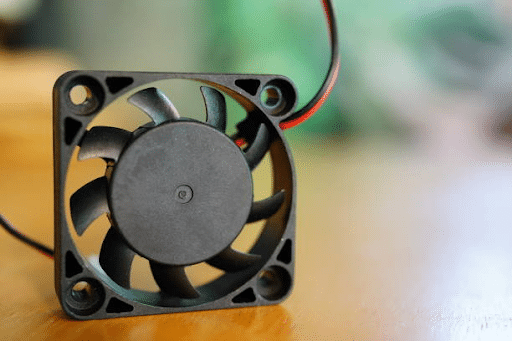Sustainability is no more a trend in today’s industrial world; it is a requirement in the modern world. In the current world, industries are looking forward to cutting on their emissions and costs hence the importance of energy efficiency in machinery. Of all the necessary equipment used in industries, cooling fans are critical for temperature regulation in different settings, including production and computer servers. In this article, the author will discuss the role that energy efficiency in cooling fans plays in promoting sustainability in industry.
Importance of Energy-Efficient Cooling Fans
Cooling fans play a very important role in controlling temperature and hence helping in the proper functioning of industrial equipment including motors, compressor and electrical panels. However, cooling fans are power consuming and especially when operating for long hours in large industries and organizations.
Cooling fans are generally used for the purpose of circulating air in a particular area or a system and these are energy efficient to the extent that they are capable of providing the necessary amount of air flow with the least amount of power. Industries should consider using energy efficient fans and this will help them cut on their energy bills as well as the amount of carbon they release to the atmosphere. To B2B companies, efficiency is not only the process of reducing cost but also the process of achieving sustainability and enhancing business operations.
How Energy Efficiency Works
The efficiency of cooling fans in energy is defined by the blade design, the efficiency of the motor and the overall air flow of the system. Modern energy-efficient fans often incorporate advanced technologies, such as:Modern energy-efficient fans often incorporate advanced technologies, such as:
– Variable Speed Drives (VSDs): These enable the fan to regulate its speed depending with the prevailing cooling requirements hence minimizing the use of energy that may not be necessary.
– Optimized Blade Design: Better aerodynamics mean that there is better air flow with lesser resistance hence more efficiency.
– Brushless Motors: These motors are far much better than the normal motors as they use less power and are also easy to maintain.
For instance, a CPU cabinet fan that is used in server rooms can greatly benefit from energy efficient design that will in turn cut energy costs for cooling. Likewise, in heavy duty industrial operations, an impeller blower fan can enhance organizational productivity through high performance air flow with less energy requirement.
Benefits of Energy-Efficient Cooling Fans
Cooling fans which are energy efficient provide numerous advantages to industrial processes. The most prominent advantages include:The most prominent advantages include:
Cost Reduction
The first advantage that comes with the use of energy efficient cooling fans is that of energy conservation. Cooling fans are usually needed to be running all the time particularly in industries where heat is a major concern or in equipment that is sensitive to heat. This means that through efficiency of energy, there is a reduction of the amount of money that companies spend on electricity bills each month. In large scale operations, this can translate to significant savings in a year as highlighted by the discussion above.
Improved Equipment Longevity
This indicates that cooling fans will also be efficient and at the right level to support the equipment that they are supposed to cool. One of the major causes of equipment failure is overheating and cooling fans play a crucial role in ensuring that the equipment is cooled adequately without overstraining it.
Environmental Impact
There is a growing concern with environmental standards and emissions and companies are expected to conform to these standards. This is because the use of energy efficient cooling fans can help a company to reduce its total energy consumption and hence, its total greenhouse emission.
Compliance and Certification
Most areas have certain codes for energy efficiency of industrial equipment. Through the adoption of energy-efficient cooling fans, the B2B firms will be able to meet these regulations and therefore will not be penalized while at the same time improving on the image of their brand as being environmentally sensitive.
Factors to Consider When Choosing Cooling Fans
There are certain factors that are important when choosing cooling fans for industrial use, which will help to achieve the greatest energy efficiency.
Fan Size and Placement
The size of the cooling fan and its position in the system are very important to achieve the required result. A very large fan results in energy wastage while a small fan may not suffice to cool the equipment thus putting a lot of strain on it. Proper placement also ensures that there are not many hindrances to the flow of air while at the same time increasing efficiency.
Airflow and Pressure Requirements
The airflow and pressure requirements differ from one application to another. For instance, an impeller blower fan that is used in a high pressure system will have a different design as compared to a fan that is used in a low pressure system. By matching the fan’s capabilities to the system requirements, the fan will run at maximum efficiency.
Motor Efficiency
The energy consumption of the system is highly dependent on the efficiency of the motor that is used to drive the cooling fan. Brushless DC motors are preferred by most users due to energy efficiency and longer service than the regular motors.
Control Mechanisms
The contemporary cooling fans are usually accompanied with the features that enable them to work at different speeds depending on the cooling requirements of the system. It is most helpful in systems where cooling requirements vary with time since it helps to save energy.
Future of Energy-Efficient Cooling Fans
The future of cooling fans for industrial use looks bright as there is continuous development on the energy consumption, design and control of these cooling fans. One of the trends is the use of IoT (Internet of Things) technology, which enables controlling the cooling fans remotely. This allows for dynamic control of fan speeds and air flow according to the current load requirements of the system thus improving on the energy efficiency.
Another important prospect is the application of eco-friendly materials in the creation of cooling fans. Companies are gradually shifting to materials that are not only strong but also eco-friendly and this is likely to decrease the amount of carbon emissions during the production process.
Hence, for B2B companies, the adoption of cooling technologies which are energy efficient and have features that can be incorporated in the future will be a way of ensuring competitiveness while fulfilling sustainability goals. Whether it is a CPU cabinet fan in IT systems or an impeller blower fan in heavy industrial applications, the focus on energy efficiency will keep on pushing the technology forward and enhance the cooling systems.
Conclusion
Therefore, the energy efficiency of cooling fans is an essential aspect that can help to minimize the operational costs, enhance equipment performance and meet sustainability objectives in industries. When selecting options that are energy efficient, the companies are able to save on costs in the long run, meet the legal requirements, and reduce the impacts on the environment. In the future, as technology advances, cooling fans will play an even greater part in industrial applications, as well as contributing to its sustainability.
The modern business needs to consider energy-efficient cooling systems as one of the strategic directions of sustainable development and responsibility for the future of the industry.



